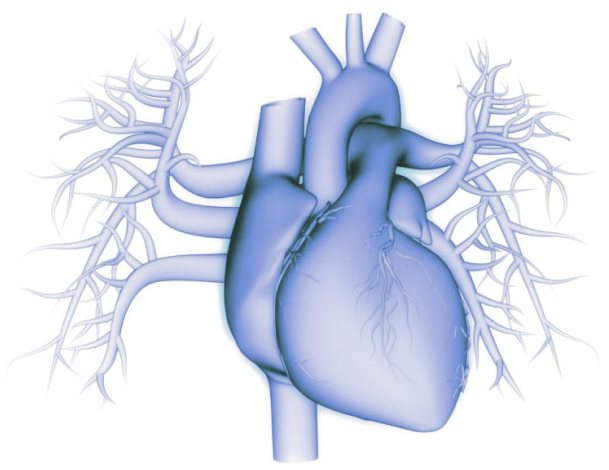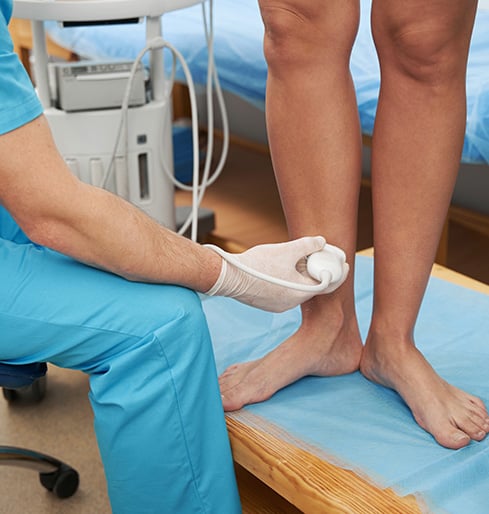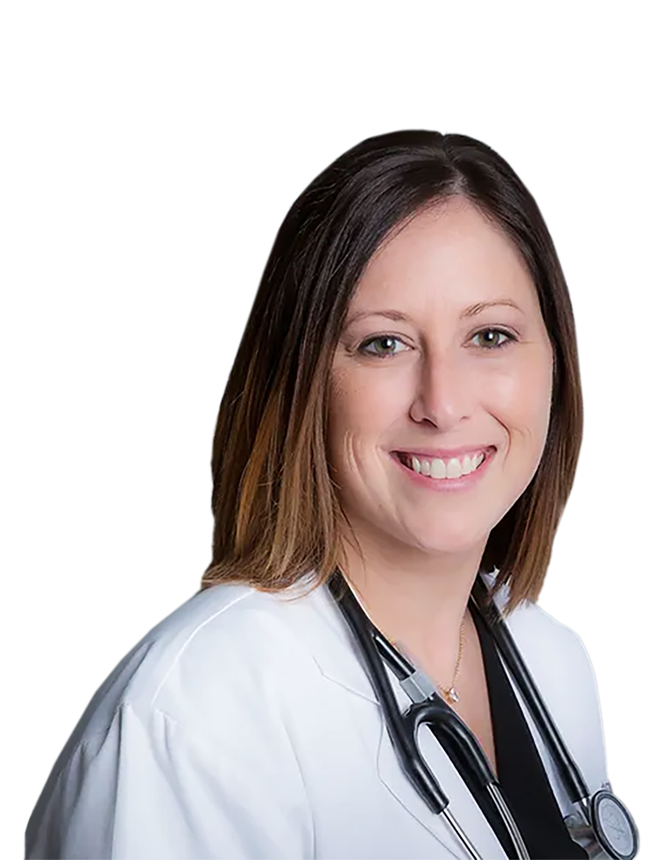Conditions & Symptoms
Clinical Cardiology

Cardiac Imaging and Diagnostics
Electrophysiology
Invasive & Interventional Cardiology
Vein & Vascular Care
Procedural Lab
(In-Office)
Preventive Services
CVM Locations
Leg Swelling
Understanding Leg Swelling
Edema is most noticeable in your legs and feet due to gravity pulling the excess fluid down. Though it may be caused by a temporary situation, such as sitting or standing for a long time, the presence of edema could indicate an underlying disease that needs to be treated separately.
Peripheral edema can happen with anyone at any age, but it is more common in older adults and pregnant women. It can involve one or both legs. Symptoms you may see with swelling in legs include:
- Swollen, puffy legs
- Heavy, achy, or stiff legs
- Indentions/pitting in the skin after pressing on it
- Skin that feels tight and warm
- Difficulty putting on socks and shoes
- Changes in skin pigmentation
- Varicose veins

Treatment for Swelling in Legs
Treatment for swelling in legs will depend on the underlying cause. It is important to identify the reason for your symptoms so we know which treatment will be best.
We have many diagnostic tests that can show how well blood is flowing through your veins. These can include:
- Venous Doppler ultrasound of the leg, a noninvasive test to observe blood flow and detect possible blood clots
- Radiographic imaging, including CT scans, MRIs, or X-rays, to rule out other conditions that could be causing your symptoms
This diagnostic testing will determine our next steps. If we feel we need further testing to rule out something like a heart condition, we will arrange it.
The goal of treating venous disease is to improve blood flow in the blood vessels of your legs. Mild cases may be treated with compression stockings, leg elevation, strengthening leg muscles, and avoiding prolonged periods of standing.
Recovery
More on Leg Swelling
Causes of Peripheral Edema
The most common cause of peripheral edema is venous insufficiency, which means that the veins in your legs are damaged or weakened and blood flow to your heart is reduced. As a result, blood pools in your lower legs.
The condition affects up to 30 percent of the population, and it affects women more often than men. We usually diagnose venous insufficiency once we rule out other systemic diseases that could be causing symptoms, especially in those over 50.
Other potential causes of edema include:
- Blood Clot. If edema along with pain occurs suddenly in one leg, it could indicate deep vein thrombosis. This serious condition requires emergency medical help.
- Heart Failure. Blood can pool in your lower legs when the right side of your heart isn't pumping as it should, causing edema.
- Pericarditis. Pericarditis is the inflammation of the thin outer membrane surrounding your heart. It can cause peripheral edema and chest pain.
- Renal Issues or Failure. Narrowed or blocked arteries in your kidneys can interfere in the removal of waste products and fluids from your blood. The buildup of excess fluids can lead to edema.
Minimally-Invasive Treatment Options for Venous Disease
If you have a more advanced form of venous disease, we will recommend one of several minimally-invasive treatment options. They include:
- Medicines: We may prescribe medications that increase blood flow through the vessels to be used along with other measures such as compression therapy.
- Radiofrequency Ablation (RFA): We use a catheter to deliver heat into the affected vein, which seals and closes it. This leads to less blood pooling in the leg and improved overall blood flow. The treated vein becomes scar tissue that is absorbed by the body. Patients can resume normal activities the same day.
- Sclerotherapy: This treatment involves injecting a solution directly into the vein, creating a scar within the vein and forcing blood to reroute through healthier veins. In some cases, we may need to do multiple sclerotherapy treatments. Most people typically resume normal activities in 1-2 days.
- Stab Phlebectomy: We make tiny cuts in your skin through which we can remove varicose veins in sections. Stitches are not usually required. Most people that have the stab phlebectomy procedure typically resume normal activities in 1-2 days.
- Non-Thermal Sclerosant: This minimally-invasive procedure treats veins in the legs through the injection of a foam solution that treats the affected vessel. The diseased vein collapses and the foam is deactivated. Patients may resume some activities the same day.
- Non-Thermal Adhesive Ablation: This procedure treats varicose veins to improve symptoms such as leg heaviness, pain, restlessness, itching, swelling, and ulcerations. We insert a medical adhesive that seals the vein and re-routes blood through nearby healthy veins. Patients can resume normal activities the same day.
Meet Your Illinois and Iowa
Cardiovascular Physicians
In Search of Care? Request a Consultation Today



